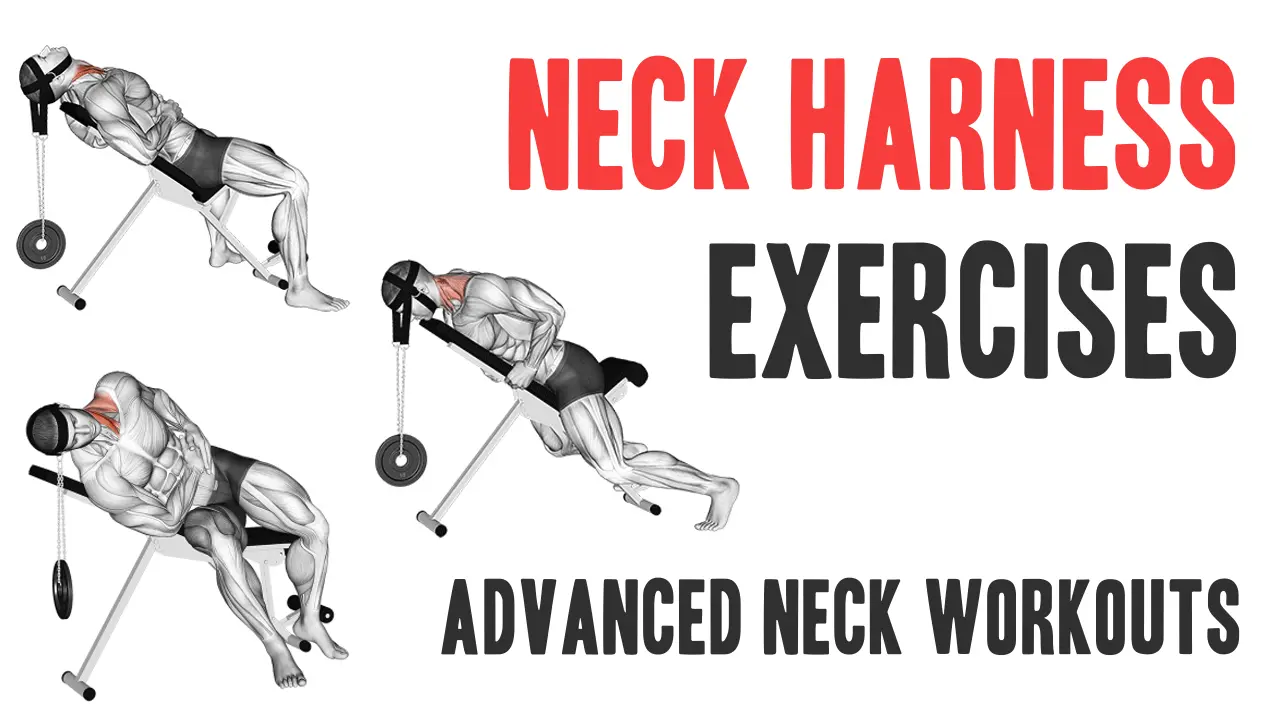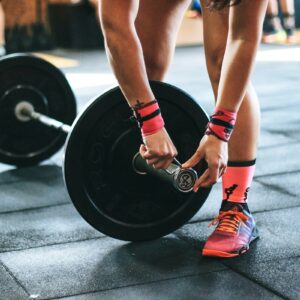Contents
When it comes to fitness, the neck is often overlooked, despite its crucial role in posture, stability, and injury prevention. Strengthening your neck muscles can enhance your overall fitness and athletic performance, and a neck harness (also known as a neck strap or head harness) is one of the most effective tools for the job.
Are you ready to take your neck training to the next level? This article will guide you through three essential exercises to build a strong, balanced neck, as well as provide tips on preparation, safety, and who can benefit most from incorporating these movements into their routine.
Why Use a Neck Harness?
A neck harness is specifically designed to target the muscles in your neck, helping to:
- Improve neck muscles and neck strength.
- Enhance posture, especially for desk workers or those with forward head posture.
- Prevent injuries in contact sports and other high-impact activities.
This simple yet effective tool offers versatility, allowing you to train your neck from various angles for balanced muscle development.
Who Should Do Weighted Neck Harness Exercises?
The weighted neck harness is a versatile tool suitable for a variety of individuals looking to enhance their fitness, athletic performance, or recovery.
- Experienced athletes looking to enhance performance and resilience in high-impact sports.
- Bodybuilders seeking to build a thicker, well-defined neck for a balanced physique.
- Fitness enthusiasts aiming to overcome plateaus and take their training to the next level.
- People Recovering from Neck Injuries: Always consult a healthcare professional or physiotherapist before incorporating weighted exercises into your rehabilitation routine.
Warm-Up Before You Begin
Before diving into weighted exercises, warming up is essential to prevent injury and prepare your neck muscles for the load. Perform the following warm-up routine:
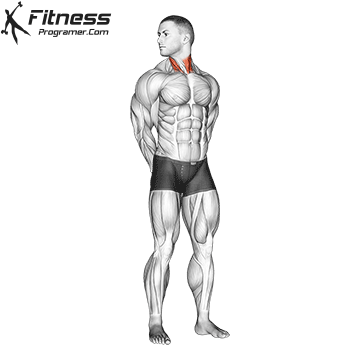
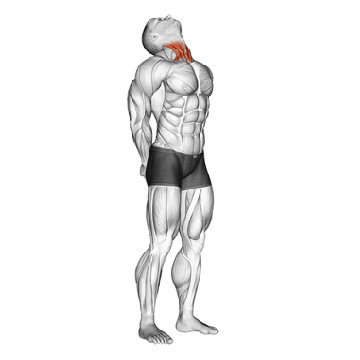
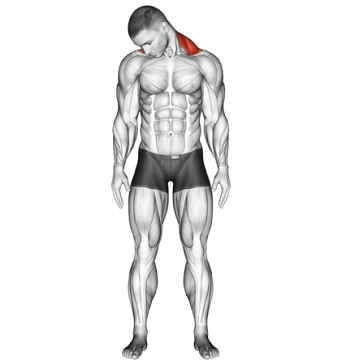
- Neck Rotations: Slowly rotate your neck in a circular motion, 10–15 reps in each direction.
- Neck Tilts: Move your head forward, backward, and side-to-side. Perform 2–3 sets of 10–15 reps.
This warm-up increases blood flow, loosens tight muscles, and prepares your neck for more intense activity.
3 Weighted Neck Harness Exercises
1. Neck Harness Flexion

Benefits
- Targets the anterior neck muscles, including the sternocleidomastoid and scalene muscles, which play a key role in neck flexion and stabilization.
- Enhances neck mobility and helps counteract forward head posture caused by desk work or screen time.
How to Perform
- Set Up Your Equipment
- Use a neck harness designed for weightlifting.
- Attach a light weight plate to the harness chain, ensuring it is securely fastened.
- Prepare the Bench
- Adjust a workout bench to a 45-degree incline.
- Sit on the bench, leaning back so your upper back is supported while your head extends beyond the edge of the bench.
- Starting Position
- Secure the neck harness on your head, ensuring a snug fit.
- Allow your head to hang slightly back in a neutral position.
- Execute the Movement
- Slowly flex your neck forward, bringing your chin toward your chest in a controlled motion.
- Pause at the top of the movement to fully contract the neck muscles.
- Gradually return to the starting position, resisting the weight as you lower your head.
- Repetitions
- Perform 2–4 sets of 8–15 repetitions. Increase weight gradually as your strength improves.
2. Neck Harness Extension
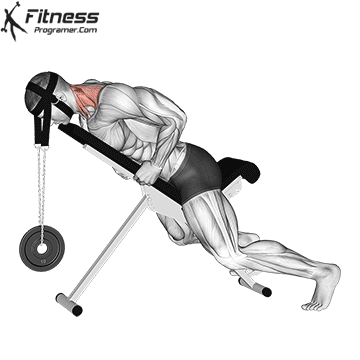
Benefits
- Strengthens the posterior neck muscles, including the trapezius, splenius capitis, and semispinalis capitis.
- Improves neck stability, enhances posture, and reduces the risk of neck injuries in sports and daily activities.
How to Perform
- Get into Position
- Lie face-down on the bench with your chest and abdomen supported.
- Let your head extend beyond the top of the bench.
- Starting Position
- Attach the weight to the harness and wear it securely.
- Allow your head to drop slightly forward for a mild stretch.
- Execute the Movement
- Slowly extend your neck, lifting your head until it aligns with your upper back.
- Pause for 1–2 seconds to fully engage the muscles.
- Gradually lower your head back to the starting position, maintaining control throughout.
- Repetitions
- Perform 2–4 sets of 8–15 repetitions, adjusting the weight as needed.
3. Neck Harness Lateral Flexion
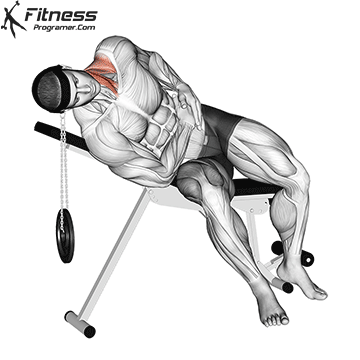
Benefits
- Activates the lateral neck muscles, such as the levator scapulae and sternocleidomastoid, improving side-to-side mobility and balance.
- Useful for athletes in contact sports to enhance neck stability during impacts.
How to Perform
- Starting Position
- Strap the head harness securely to your head and attach a weight plate.
- Lie on your side on an incline bench, with your head extending beyond the bench.
- Allow the weight to hang naturally, creating a mild stretch in the opposite side of your neck.
- Execute the Movement
- Exhale as you laterally flex your neck, lifting your head toward your shoulder in a slow and controlled manner.
- Hold the position for 1–2 seconds at the top.
- Inhale as you lower your head back to the starting position.
- Repetitions
- Perform 2–4 sets of 8–15 reps on each side for balanced development.
Key Safety Tips
- Start Light: Begin with a manageable weight to master the form and prevent overloading your neck.
- Focus on Form: Keep movements slow and controlled to engage the correct muscles and avoid injury.
- Avoid Overtraining: Allow 48 hours of rest between neck workouts to let the muscles recover.
- Listen to Your Body: If you experience discomfort or pain, stop immediately and reassess your technique or weight.
Final Thoughts
Strengthening your neck muscles with a neck harness can bring substantial benefits, from improved posture to enhanced athletic performance. By incorporating these three exercises and adhering to safety guidelines, you’ll develop a stronger, more stable neck that supports your overall fitness goals.

